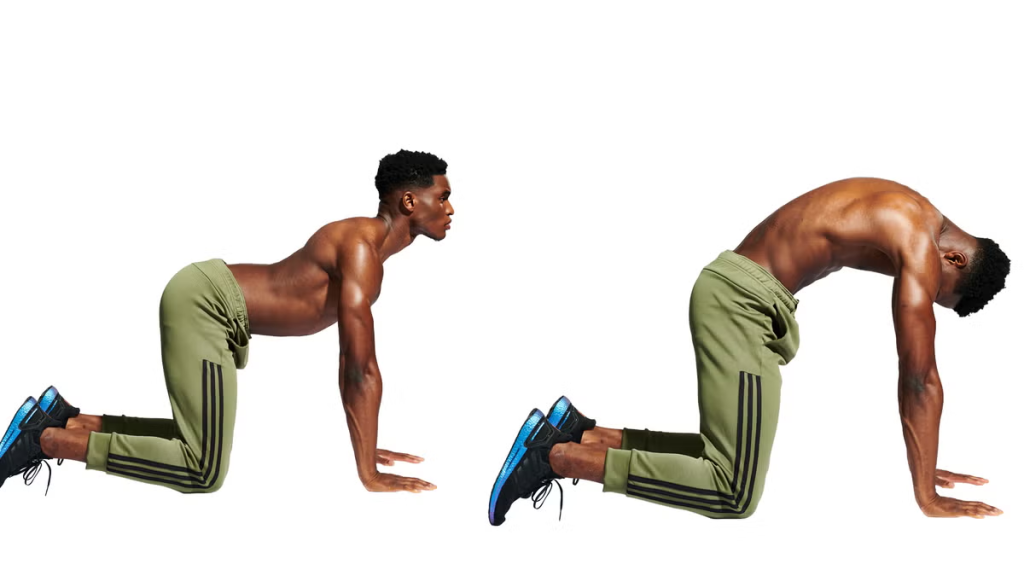“Your body just created life—now it’s time to gently reconnect with it.”
After childbirth, many women are eager to regain strength, especially in their core. But diving into intense workouts too soon can do more harm than good. The truth? Your postpartum journey requires intentional, gentle movement—not crunches and boot camps.
Whether you had a natural birth or C-section, postpartum fitness is about healing first, strengthening second. Rebuilding your core doesn’t just mean flatter abs—it means restoring deep internal stability, posture, and pelvic floor function.

30-Day Postpartum Core Rebuild — What You Can Expect
| Focus Area | Typical Changes After 30 Days of Consistent Practice |
|---|---|
| Core Strength & Stability | Noticeably firmer transverse-abdominis “corset” feel; better control when rolling out of bed, lifting baby, or standing up. |
| Pelvic Floor Function | Fewer accidental leaks when coughing or sneezing; ability to contract / relax pelvic floor muscles on cue with less fatigue. |
| Posture & Back Comfort | Straighter sitting and standing posture; reduced lower-back ache thanks to stronger glutes and deeper core engagement. |
| Diastasis Recti Gap | Mild separations (≤ 2 finger widths) often narrow by 0.5–1 cm; doming or bulging during daily tasks becomes less frequent. |
| Energy & Mood | Gentle daily movement boosts circulation and endorphins—many moms report steadier energy and fewer “baby-blue” dips. |
| Body Awareness & Confidence | Improved mind-muscle connection: you can feel which muscles are working and move with more control, fostering renewed body trust. |
| Overall Physical Readiness | Solid foundation laid for progressing to moderate workouts (e.g., light resistance bands, brisk walking) without discomfort or setback. |
Postpartum Core Exercise: Do’s & Don’ts
| Do’s | Don’ts |
|---|---|
| Get medical clearance before starting any postpartum exercise. | Don’t rush into high-impact workouts or core-intensive moves like crunches or planks. |
| Focus on breathing exercises and pelvic floor activation first. | Avoid holding your breath during movements—it increases intra-abdominal pressure. |
| Engage your core gently during daily tasks like lifting your baby. | Don’t ignore signs of pain, pressure, or bulging in your abdomen or pelvic area. |
| Listen to your body and rest when needed—healing is the priority. | Don’t compare your progress to others—every recovery journey is unique. |
| Use slow, controlled movements to rebuild strength safely. | Don’t overdo it—more reps or faster workouts don’t mean faster recovery. |
| Incorporate posture work to support core and spine alignment. | Don’t slouch or strain your lower back during exercises or nursing. |
| Consider seeing a pelvic floor therapist if unsure about exercises. | Don’t rely on waist trainers or wraps for strength—they’re support tools only. |
Did You Know?
After pregnancy, the abdominal muscles—particularly the rectus abdominis—can become separated. This condition, called diastasis recti, affects up to 60% of postpartum women and often goes undiagnosed. Ignoring it can lead to long-term back pain, pelvic floor issues, and weak core function.
Before You Begin: Check With Your Healthcare Provider
Before starting any postpartum exercise, it’s essential to get medical clearance—especially if you’ve had a C-section, complications, or are experiencing pain, bleeding, or prolapse symptoms.
Once you’re cleared, start with these five gentle, at-home routines designed to rebuild your core safely and effectively.
1. Diaphragmatic Breathing (Deep Belly Breathing)

Duration: 5 minutes
Why It Matters: This breathwork lays the foundation for all core work. It activates the transverse abdominis (your body’s natural corset) and calms the nervous system.
How to Do It:
- Lie on your back with knees bent.
- Place one hand on your chest and the other on your belly.
- Inhale through your nose, allowing your belly to rise (not your chest).
- Exhale through pursed lips, gently drawing your belly button toward your spine.
- Repeat for 10 breaths, slowly increasing time over days.
Myth Buster: Holding your stomach in all day (aka “sucking it in”) isn’t core training—it can actually increase intra-abdominal pressure and worsen diastasis recti.
2. Pelvic Tilts

Duration: 3–5 minutes
Why It Matters: Strengthens lower abs and improves pelvic alignment—essential for reducing back pain and restoring pelvic floor coordination.
How to Do It:
- Lie on your back, knees bent, feet flat.
- Inhale to prepare.
- As you exhale, tilt your pelvis slightly backward so your lower back presses into the floor.
- Hold for a second, then return to neutral.
- Repeat for 10–12 reps.
Fun Fact: This simple movement can also improve digestion and circulation by stimulating the lower abdominal organs.
3. Heel Slides

Duration: 5–7 minutes
Why It Matters: Gently engages your core while improving mobility and muscle coordination.
How to Do It:
- Lie on your back, knees bent, feet flat.
- Inhale, then as you exhale, engage your core and slowly slide one heel along the floor until your leg is straight.
- Inhale as you bring it back.
- Alternate legs for 10 reps each side.
Caution:
- Avoid arching your back.
- If you notice bulging at the midline of your abdomen, scale back.
4. Glute Bridges

Duration: 5 minutes
Why It Matters: Activates your glutes and hamstrings—muscles often weakened in pregnancy—which support the pelvis and lower back.
How to Do It:
- Lie on your back, knees bent, arms at your sides.
- Exhale and lift your hips toward the ceiling by pressing through your heels.
- Hold at the top for 3 seconds, then slowly lower.
- Do 10–15 reps.
Did You Know? Strengthening your glutes can indirectly improve core function by stabilizing the pelvis, making all movements more efficient.
5. Cat-Cow Stretch

Duration: 3–5 minutes
Why It Matters: Encourages spinal mobility and reconnects the brain-body connection with the core and pelvic floor.
How to Do It:
- Start on hands and knees (tabletop position).
- Inhale, arch your back (cow), lifting your head and tailbone.
- Exhale, round your spine (cat), drawing belly to spine.
- Move gently with breath for 8–10 rounds.
Bonus Tip: This is also a great de-stressor, helping you stay grounded during the emotionally intense postpartum period.
Postpartum Recovery: More Than Just Physical
Your core isn’t the only thing healing. Postpartum recovery is a mind-body process, and gentle movement can:
- Boost mood and reduce postpartum blues
- Improve sleep quality
- Strengthen your connection with your body
- Support hormonal balance
You’re not just “bouncing back”—you’re rebuilding stronger, smarter, and more connected than before.
Final Words
The road to postpartum fitness isn’t a sprint—it’s a journey of healing, patience, and grace. These gentle at-home routines offer the building blocks of a safe recovery, helping you regain core strength without strain.
Remember: Consistency over intensity wins in postpartum recovery. Celebrate small wins. A few mindful breaths today can pave the way for a stronger tomorrow.
Frequently Asked Questions (FAQs)
When is it safe to start postpartum exercise?
Most women can begin gentle movements like breathing exercises and pelvic floor work within a few days of a vaginal birth, but always consult your doctor first. After a C-section, it may take 6–8 weeks or longer before starting any structured routine.
What is the best exercise to start with after giving birth?
Diaphragmatic breathing is the best starting point. It reconnects you with your deep core muscles and helps activate the pelvic floor and transverse abdominis without any strain.
Can I do ab workouts if I have diastasis recti?
Yes, but avoid traditional ab moves like crunches and sit-ups. Focus instead on core-safe exercises like heel slides, pelvic tilts, and glute bridges. These help close the gap and restore strength safely.
How do I know if I have diastasis recti?
You can do a self-check by lying on your back, lifting your head slightly, and pressing your fingers down the midline of your abdomen. If you feel a gap wider than two fingers, consult a pelvic floor specialist for a formal diagnosis.
Is it normal to still look pregnant weeks after delivery?
Yes. The uterus takes about 6–8 weeks to shrink back to its pre-pregnancy size. Swelling, fluid retention, and weakened abdominal muscles also contribute to a lingering “pregnant” appearance.
How long does it take to rebuild core strength postpartum?
It varies. With consistency, many women begin to see and feel improvements in 6–12 weeks, but full recovery may take 6 months to a year, especially if you’re dealing with diastasis recti or pelvic floor dysfunction.
Can these exercises help with postpartum back pain?
Absolutely. Core weakness and poor posture are major causes of postpartum back pain. These gentle routines strengthen stabilizing muscles and improve alignment, providing relief over time.
What if I feel pain or pressure while exercising?
Stop immediately. Pain, bulging along the midline, or pelvic pressure could be signs of diastasis recti, pelvic organ prolapse, or overexertion. Consult your doctor or a pelvic floor physical therapist before continuing.
Should I wear a postpartum belly wrap while doing these exercises?
Some women find support wraps helpful in the early stages, but they should never replace core engagement. Use them for support—not as a shortcut to strength.





